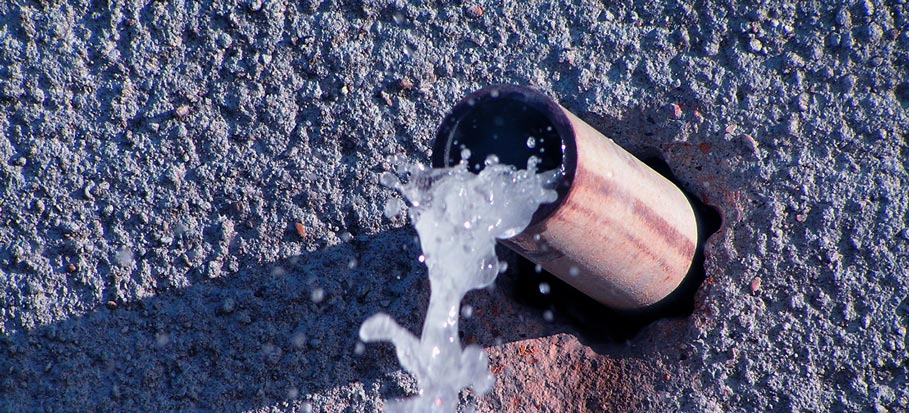Uncover Concealed Water Line Leaks: Six Tested Techniques for Detecting
Uncover Concealed Water Line Leaks: Six Tested Techniques for Detecting
Blog Article
We have unearthed this post relating to Hacks to detect leaks listed below on the net and concluded it made sense to relate it with you on this site.

Early detection of leaking water lines can minimize a prospective catastrophe. Some tiny water leakages may not be noticeable.
1. Take A Look At the Water Meter
Inspecting it is a proven means that aids you uncover leakages. If it moves, that shows a fast-moving leak. This implies you might have a slow-moving leak that could even be underground.
2. Inspect Water Usage
Analyze your water costs and track your water consumption. As the one paying it, you should discover if there are any type of inconsistencies. If you identify sudden changes, in spite of your usage being the same, it implies that you have leaks in your plumbing system. Remember, your water bill need to drop under the exact same range every month. A sudden spike in your costs suggests a fast-moving leak.
Meanwhile, a steady rise on a monthly basis, despite having the very same behaviors, shows you have a sluggish leakage that's additionally slowly intensifying. Call a plumber to completely examine your building, especially if you feel a cozy location on your flooring with piping underneath.
3. Do a Food Coloring Test
When it involves water intake, 30% comes from toilets. Test to see if they are running appropriately. Drop specks of food shade in the container and wait 10 mins. There's a leak in between the storage tank as well as dish if the shade somehow infiltrates your bowl during that time without flushing.
4. Asses Exterior Lines
Don't fail to remember to inspect your outside water lines as well. Test spigots by attaching a garden tube. Needs to water permeate out of the link, you have a loose rubber gasket. Replace this and ensure all links are tight. If you have actually got a sprinkler system, it will help get it professionally took a look at as well as kept annually. One little leak can squander tons of water as well as surge your water bill.
5. Evaluate the scenario as well as inspect
Homeowners need to make it a practice to examine under the sink counters as well as also inside cupboards for any kind of bad odor or mold development. These two warnings indicate a leak so punctual attention is needed. Doing routine assessments, also bi-annually, can save you from a significant trouble.
Inspect for stainings and also compromising as a lot of pipelines and also appliances have a life span. If you presume leaking water lines in your plumbing system, don't wait for it to intensify.
Early detection of leaking water lines can reduce a potential disaster. Some tiny water leakages might not be noticeable. Inspecting it is a surefire way that aids you find leaks. One tiny leak can throw away bunches of water as well as increase your water bill.
If you believe leaking water lines in your plumbing system, don't wait for it to intensify.
WARNING SIGNS OF WATER LEAKAGE BEHIND THE WALL
PERSISTENT MUSTY ODORS
As water slowly drips from a leaky pipe inside the wall, flooring and sheetrock stay damp and develop an odor similar to wet cardboard. It generates a musty smell that can help you find hidden leaks.
MOLD IN UNUSUAL AREAS
Mold usually grows in wet areas like kitchens, baths and laundry rooms. If you spot the stuff on walls or baseboards in other rooms of the house, it’s a good indicator of undetected water leaks.
STAINS THAT GROW
When mold thrives around a leaky pipe, it sometimes takes hold on the inside surface of the affected wall. A growing stain on otherwise clean sheetrock is often your sign of a hidden plumbing problem.
PEELING OR BUBBLING WALLPAPER / PAINT
This clue is easy to miss in rooms that don’t get much use. When you see wallpaper separating along seams or paint bubbling or flaking off the wall, blame sheetrock that stays wet because of an undetected leak.
BUCKLED CEILINGS AND STAINED FLOORS
If ceilings or floors in bathrooms, kitchens or laundry areas develop structural problems, don’t rule out constant damp inside the walls. Wet sheetrock can affect adjacent framing, flooring and ceilings.
https://www.servicemasterbyzaba.com/blog/how-to-detect-water-leakage-in-walls/

Do you really like more info about Detecting hidden plumbing leaks? Try to leave feedback directly below. We'd be interested to listen to your ideas about this blog post. We hope to see you back again later on. Make sure you set aside a second to promote this blog posting if you liked it. Thank you for your time invested reading it.
Tailored emergency solutions; call now. Report this page